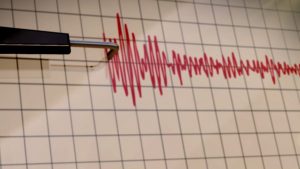Earthquake has become the most talkative issue now-a-days all around the world especially in South Asian region because they have experienced the vulnerable shock. Researchers are saying that Bangladesh is positioned at the juncture of several active tectonic plate boundaries.
Moreover, it sits atop the world’s largest river delta at close to sea level, facing both the risk posed by a quake and secondary risks of tsunamis and flooding in the quake’s aftermath.
Most of these human-caused quakes are tiny, registering less than four on geologist’s seismic scales. These window-rattlers don’t occur along natural faults, and wouldn’t have happened without human activity like mining tons of coal or potash. They occur when a mine’s roof collapses.
But some human actions can trigger much larger quakes along natural fault lines. That’s because humans, with the aid of our massive machines, can sling enough mass around to shift the pattern of stresses in the earth’s crust. Faults that might not have caused an earthquake for a million years can suddenly be pushed to failure. There are some big reasons which can create earthquake.
Build a Dam: Water is heavier than air, so when the valley behind a dam is filled, the crust underneath the water experiences a massive change in stress load. This science has raised fears that the recent earthquake in China was caused by the filling of the Three Gorges Dam reservoir, although no conclusive evidence has been presented. The Dam built in Teesta barrage and Farakka could be one of the root causes of earthquake in near future.
Inject Liquid Into the Ground: In 1961, the Army decided that the best way to dispose of toxic waste from napalm production (among other things) was to drill a 12,000-foot-deep well in the Rocky Mountains and inject the bad stuff down it into the crust of the Earth. From 1962 to 1966, the Army deposited 165 million gallons of toxic waste into this hole in the Earth. Unfortunately, the injections probably triggered earthquakes in the region, and the Army shut the operation down. Columbia’s Klose fears that carbon dioxide sequestration, in which compressed CO2 captured from coal plants would be injected into underground deposits, could generate earthquakes too, and worse they’ll be near heavily populated regions.
Mine a Lot of Coal: Coal provides more than half the electricity in Bangladesh. That means there are a lot of coal mines working overtime to pull the fossilized fuel out of the Earth. In total, miners pulled 6,195 million metric tons of coal out of the Earth in 2006 alone. And coal mines often have to pump water out along with the coal, sometimes extracting dozens of times as much water as coal. Add it up and you have a huge change in the mass of a region, and huge mass changes refigure the earthquake stresses of an area, sometimes increasing the chance of an earthquake and other times lowering it.
Drill a Gusher Dry: Three of the largest human-caused quakes occurred near a natural-gas field in Uzbekistan, the Gazli. The combination of liquid extraction and injection changed the tectonic action in the field. The biggest of the trio registered as a 7.3. According to a major analysis by Russian scientists, “Few will deny that there is a relationship between hydrocarbon recovery and seismic activity, but exactly how strong a relationship exists has yet to be determined.” They caution that in regions where tectonic activity is already high, extracting oil and natural gas could trigger strong quakes.
Create the World’s Biggest Building: Back in 2005, a geologist claimed that the world’s then-tallest building, the Taipei 101, which weighs in at more than 700,000 metric tons, was triggering earthquakes in a long-dormant fault in Taiwan. Klose doubts that the building actually did so, but said that it wasn’t outside the realm of possibility for a building to create an earthquake. The weight of the building, however, would have to be much greater than the Taipei 101’s, and even much larger than the Burj Dubai, currently still under construction but already the world’s tallest building.
-Sraff reporter


